Inspiration
Historic Objects
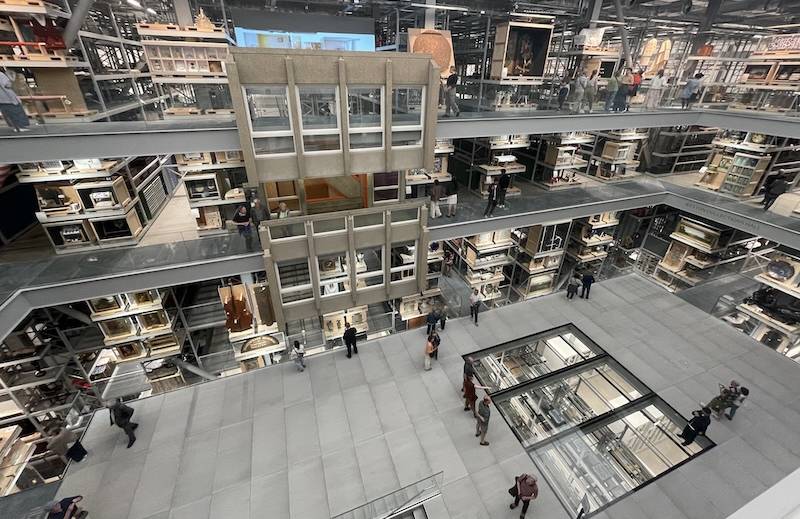
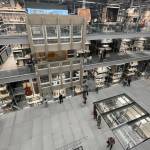
For the hottest ticket in London this summer, you don’t even need a ticket. The V&A East Storehouse is completely free to visit, and it’s changing the way people think about how museums work.
Normally when we go to a museum, curators display paintings, sculptures, or costumes lined up on walls or in glass vitrines to tell the story of a particular artist, designer, or cultural movement. Storehouse takes that model and turns it inside out. It’s like finally having a chance to display all those beautiful floats on your Fair Isle knitting.
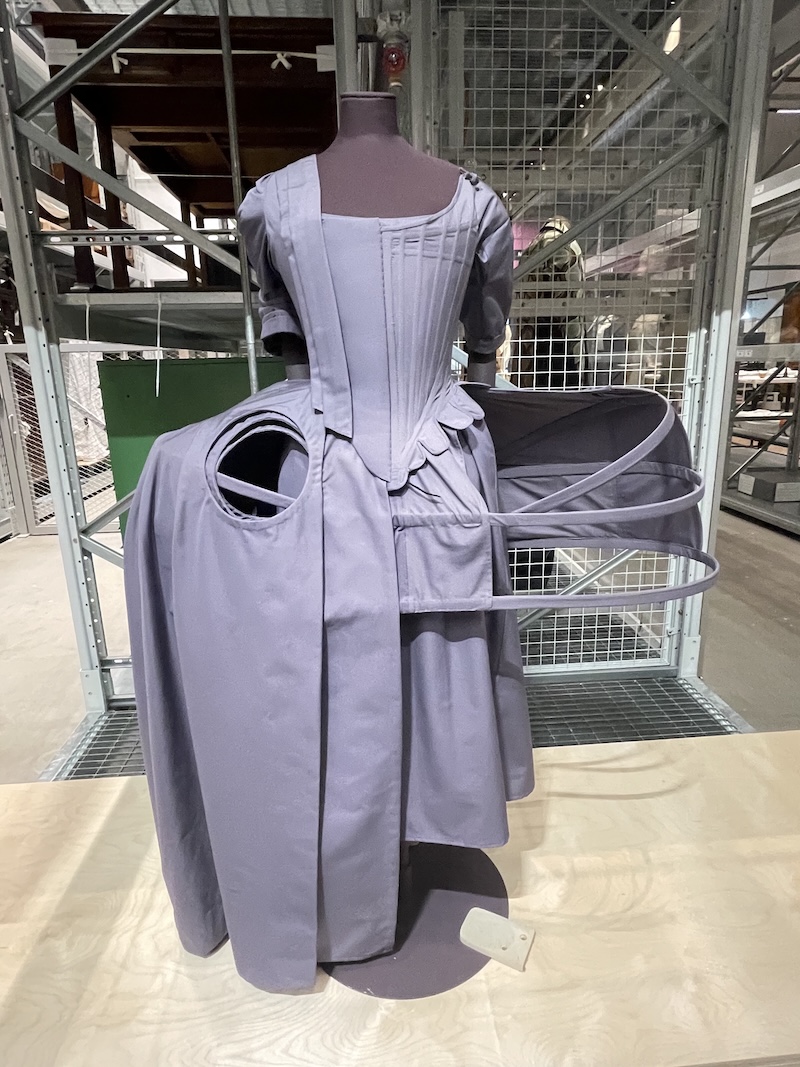
Mantua Mannequin, V&A Textile Conservation Studio, 2021
What you find are immense warehouse shelves like the collection zone in IKEA. But instead of PVC piping or a Billy Bookcase, you see an English corset from 1895 or a deconstructed mantua gown.
Rather than grouping the objects in a more traditional way, Storehouse groups them to teach about archiving methods and changing attitudes toward the objects themselves.
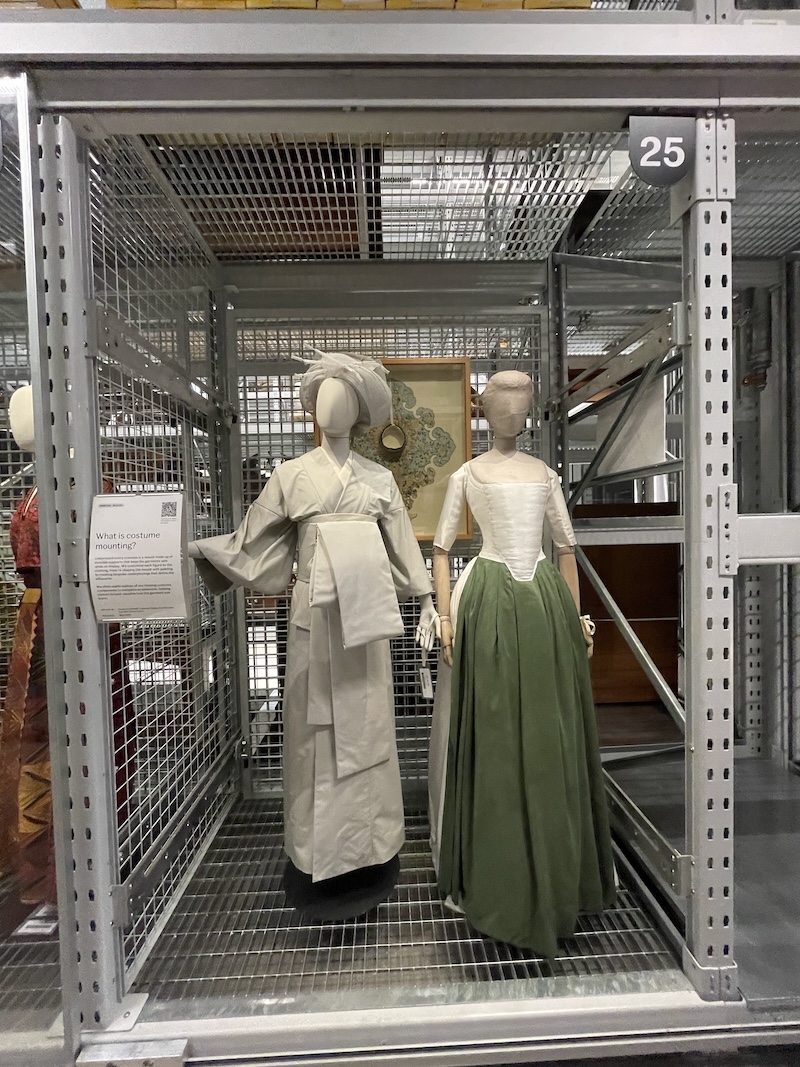
Female mannequin used in “Fashioned from Nature” and mannequin used in “Kimono: Kyoto to Catwalk,” both by V&A Textile Conservation Studio, 2018 and 2024
For instance, these costumes accompany this question: “What is costume mounting?” Stephanie Howell, Costume Display Conservator, answers, “Underneath every costume is a mount made up of invisible supports that keep the garments safe while on display. We customize each figure to the clothing, from re-shaping the mount with padding to creating bespoke underpinnings that define the silhouette.”
You know all of those little cards beside the objects in a museum? It’s the role of the interpretative team to get them just right by working “with curators to understand the many meanings of an object and we consider audiences’ needs and interests to decide how best to explain them.”
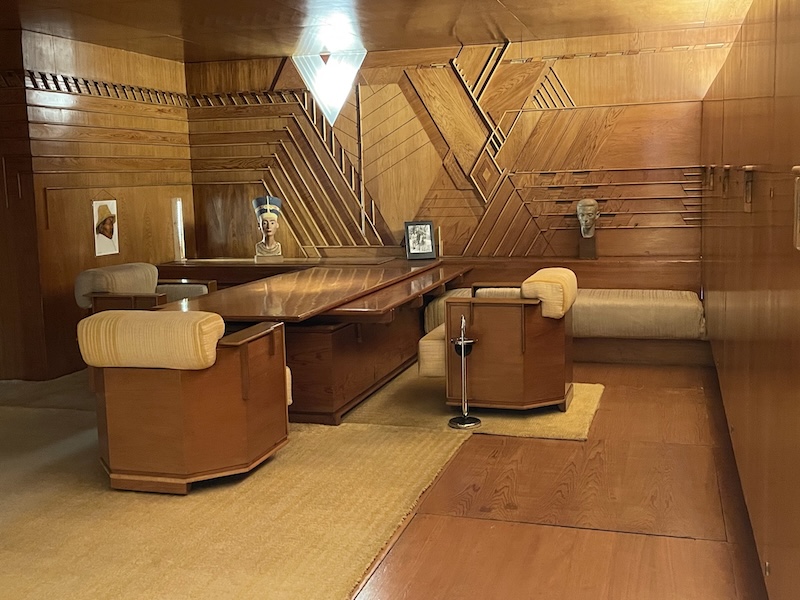
Office, paneled room designed by Frank Lloyd Wright, Pittsburgh, 1937
At Storehouse, you can find whole rooms like the entirely preserved office created by Frank Lloyd Wright for Pittsburgh department store owner Edgar J Kaufmann.
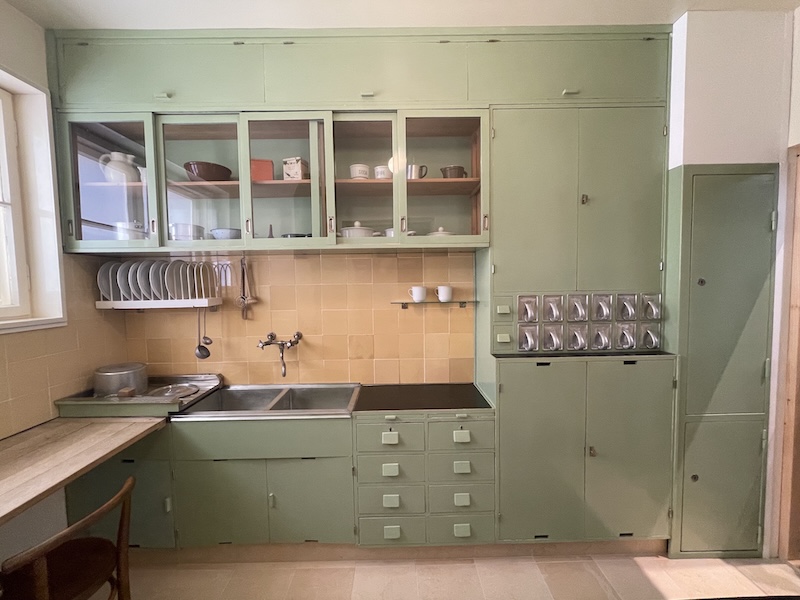
Frankfurt kitchen, designed by Margarete (Grete) Schütte-Lihotzky, Frankfurt, 1926-1927
My favorite room is the ideal kitchen designed by Margarete Schütte-Lihotzky “10,000 of which were installed across housing projects in Frankfurt, Germany.”
Storehouse shows that museums are places of living history and that the link between the objects they hold and the public is a live wire, one that carries messages back and forth in a constant flow between curators, objects, and visitors. After all, pretty much everything in museums begins with human creation.
To that end, Storehouse has made an unprecedented offer to the public in the “Order an Object” service. While I was walking through the vast open spaces of Storehouse, I looked down at a researcher sketching garments.
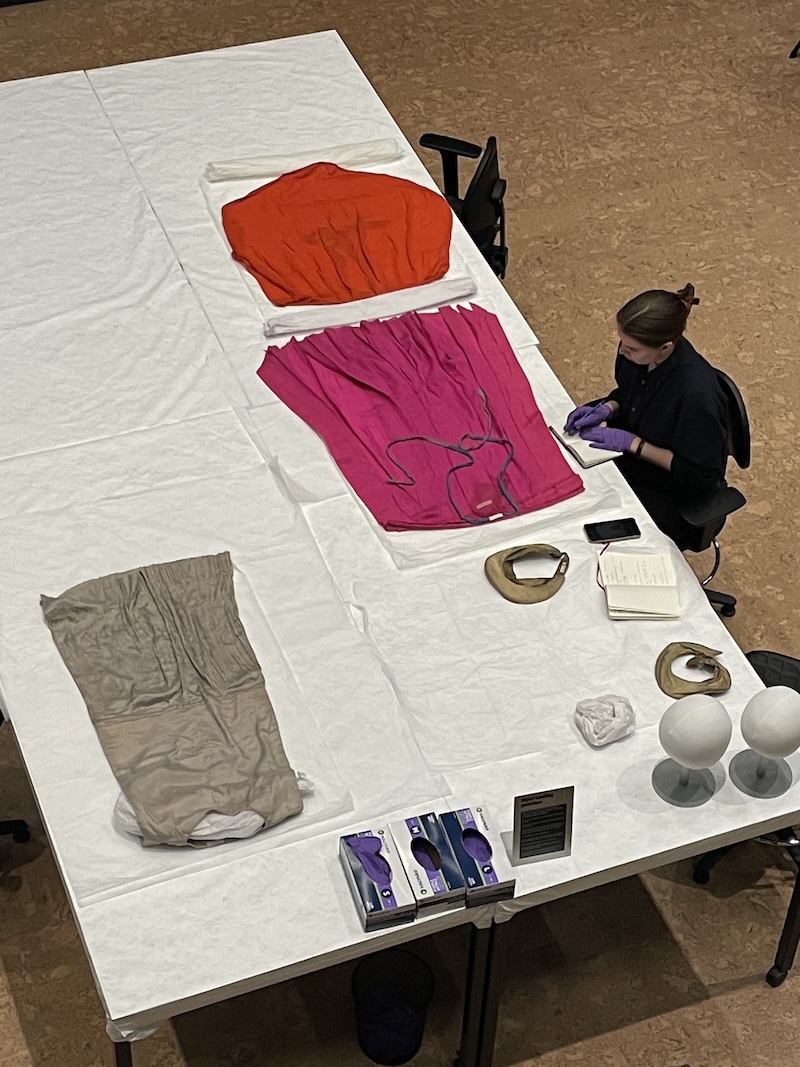
Conservator sketching textile items
Several weeks later, that was me!
Through the V&A Order an Object website you can cruise through everything in their collection and choose up to five objects to see in real life. Just make sure you have Storehouse checked as your destination for the experience. Some objects will be too fragile to qualify for the opportunity, but I was very impressed with what I was able to request.
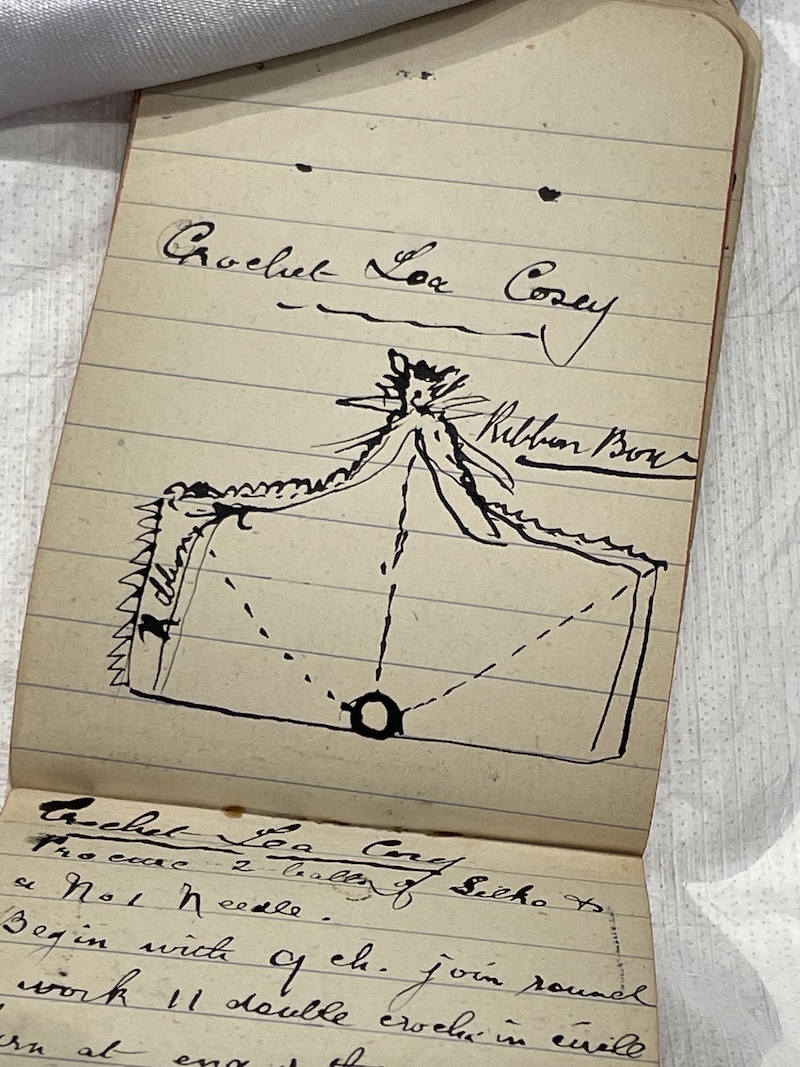
Pattern book given by Mrs C. E. Johnson England, 1900-1929
I saw two knitting sticks and a handwritten collection of knitting and crochet patterns from the early 20th century for two upcoming MDK articles. I suspect that one of the knitting sticks is actually a nutcracker, but they’ve thought of everything and I can submit a note letting the curators know that an object may be misidentified.
I also ordered a pair of knitted doll’s socks to help me with my doll sock side project. Little did I know that the socks would come attached to the doll himself!
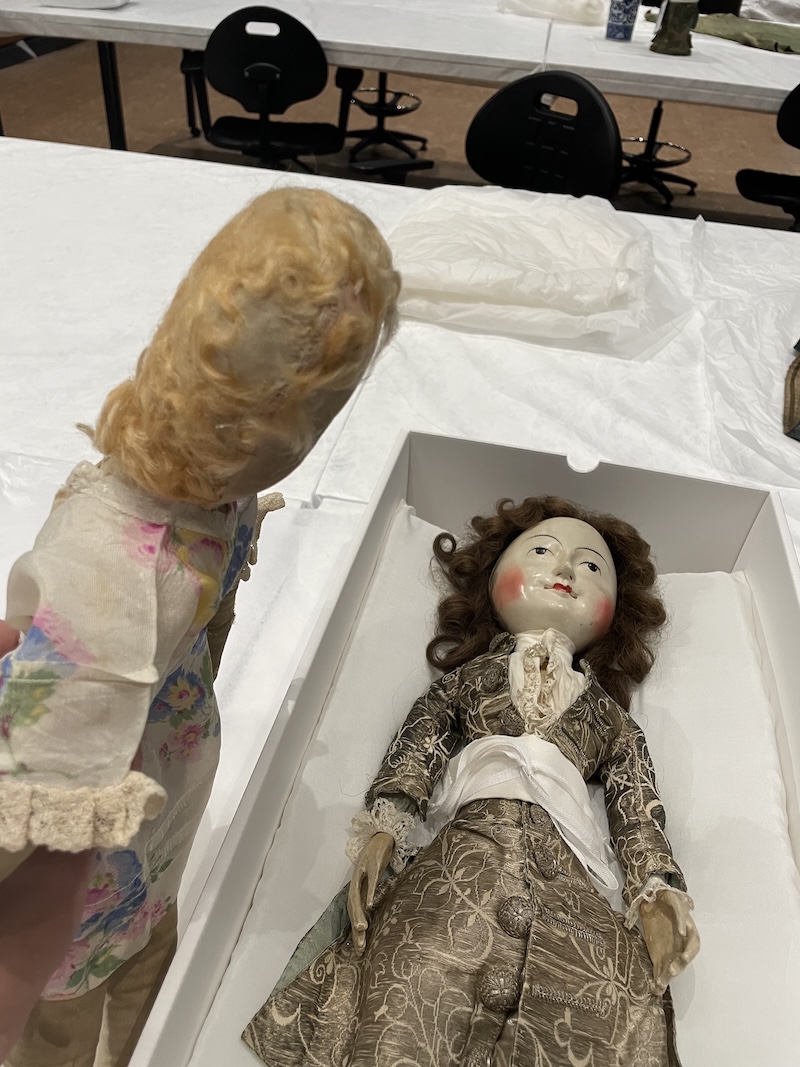
Doll “Lord Clapham” of turned wood, probably London, 1690-1700
Lord Clapham belonged to the Cockerell family, descendants of Samuel Pepys. My rag doll Marcella who was having a day out was completely in awe of him and his socks.
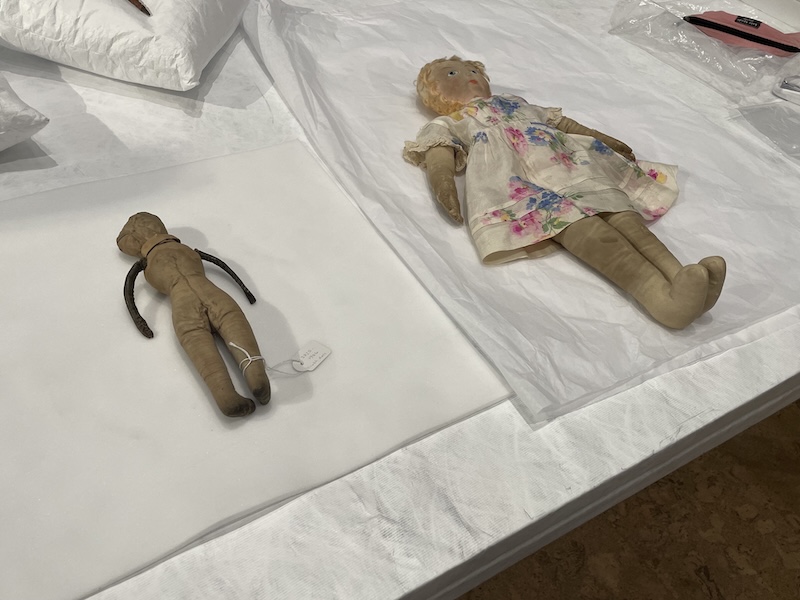
Rag doll belonging to Richard D’Oyly Carte, and called “Jack,” given 1986 by by Dame Bridget D’Oyly
Carte
I also ordered a much humbler cloth doll named Jack for my rag doll project who was more Marcella’s speed being simply stitched in cotton with a hand-drawn face and leather arms that looked like vanilla bean pods.
I was allowed to handle some of the objects with gloves or with freshly washed hands depending on their construction and fragility. I was also allowed to take photos for personal use. I now have the seeds of four articles.
You don’t need to be a researcher or academic to request objects. Two pairs of women were there simply to enjoy their passions for circus posters and beaded dresses. So, don’t hesitate to put in your request to explore. After all, that’s the whole philosophy of Storehouse—to draw back the curtain, to pass through the walls, to open the delicious boxes, and see the sheer breadth of human endeavor in an open and welcoming space.
Top tips:
Storehouse is very popular, so be prepared to queue, as they say in Britain. The first time I visited the museum, I waited 35 minutes. The line forms outside on the sunny side of the building, so bring a hat, sunscreen, water, or a parasol.
Everyone without exception has to put most of their things in lockers. Because the objects are very close to you, this is the rule. If you’ve ordered objects, you can bring a pencil, eraser, and pencil sharpener and paper with you. You can also bring your phone. If you want to bring your own object like Marcella with you, you simply let them know when you submit your request.
Objects usually need to be ordered several weeks in advance and you will be given a specific time to visit the Study Centre.
Do bring your mobile phone because there are QR codes and identifying numbers on objects that give you much more information.
There’s an excellent cafe in Storehouse which caters to many diets. There’s also a nice indoor seating area where you can eat your packed lunch.
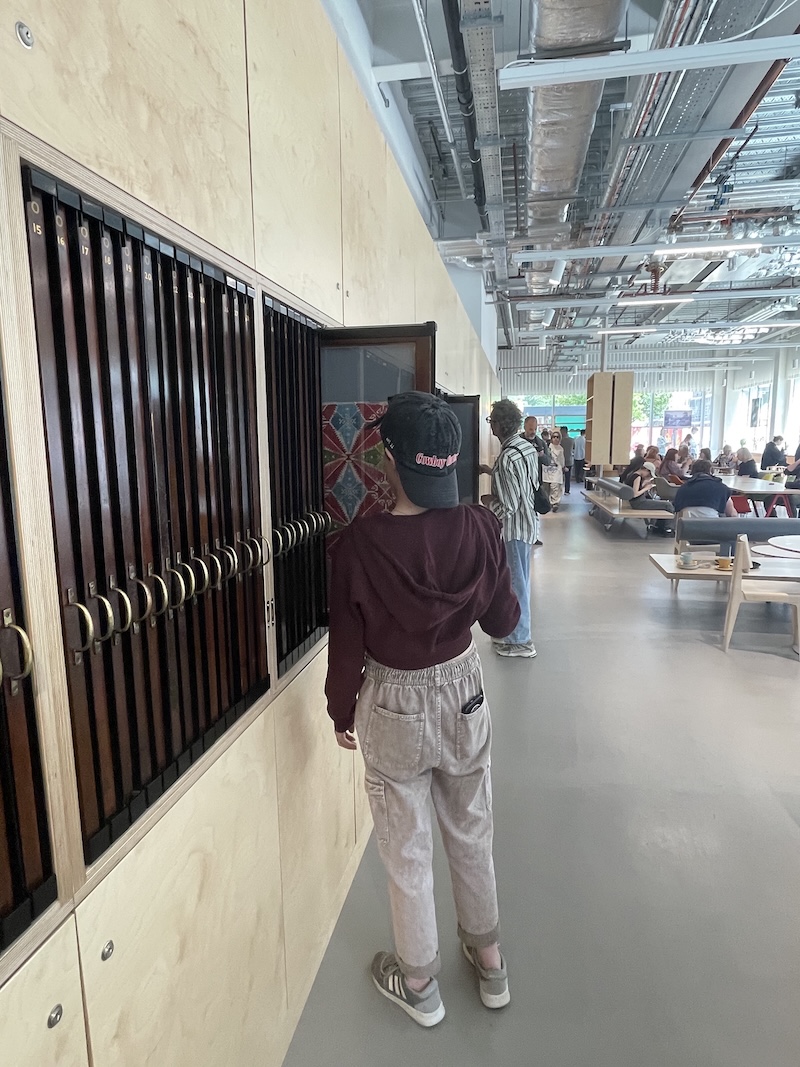
A visitor checking out the bank of textile samples near the cafe and seating area
By the sitting area, there are nearly 100 framed textiles in a bank in the wall which you can peruse at your leisure. They’re easy to miss!
Storehouse is big. Put on your walking shoes because there are four expansive floors of wonder. Everything from a child’s abacus to a vast medieval Spanish dome resides in this building. Enjoy!


Thank you!
Oh this sounds so cool!
How thrilling. Will this be permanent? Interesting about the ‘ideal’ kitchen. Placing much used stuff in the hard-to-reach corner? Thanks for this fascinating peek, Jeni. Wish I could go!
The corner is for recently washed items to dry, even the plates, which can drip onto the surface below.
Hi Chloe! Yes, it’s permanent! Some of the objects will change as they adjust the displays over time, but things like the kitchen are permanent. So, I hope you can make a plan to come to London and see it. It is truly a museum like no other!
One more reason that we need to visit England one more time!
Jeni, when I see your name on a post, I know that I will have another entry on my travel list. Happy to see that the ability to visit the V&A East Storehouse is ongoing; maybe I’ll get there! Love the “Order an Object” idea, and look forward to reading the posts that result from your research!
Thank you for this addition to my travel bucket list! 🙂
Wow, this is so cool, I had no idea something this was available. Even just looking at objects on line is fun, someday I would love to go there. What a great way for museums to share more of their collections, since so much is always stored away. Thank you!
Swoon. I could get lost in here for days!
Ooooh! This sounds wonderful. And I have wanted to see a Frankfurt after hearing about it on the podcast: https://99percentinvisible.org/episode/the-frankfurt-kitchen/
I think a trip to London is in order! Thanks, Jeni.
How wonderful – also thanks to Mlegan for the link to more info about the Frankfurt kitchen. Always fun to start my morning down a rabbit hole 😉
A dream come true.
What a stimulating share, Jeni! Sending this on to so many maker friends and family, many of whom travel.
Very cool article and opportunity
Thank you so much! I’m teaching a class on knitting in the fall semester, so I’ll be using this for my students to read! Looking forward to the future installments!
Wow. Sending this article to the daughter, who is emmigrating to London in a month. This is so very cool.
Very cool! Thank you for sharing. I’d seen this mentioned somewhere and happy to see your coverage in MDK!
Fascinating, thank you.
Fantastic! For my next trip to the UK for sure! Cheers.
Fabulous range in the article. Thank you.
Oh Jeni, this sounds like a perfect day out! I wonder what the history of the dolls were?
Thank you for sharing!
Debra
Love this – it was so interesting! Thanks for sharing.
That sounds amazing!
Definitely, will try to include a visit the next time I’m in England. Thk you